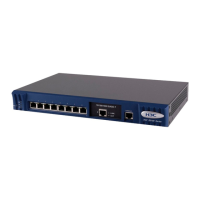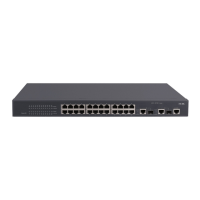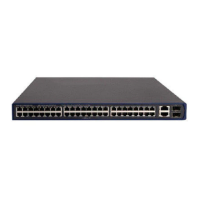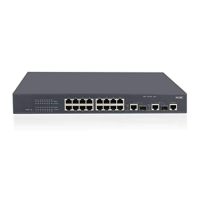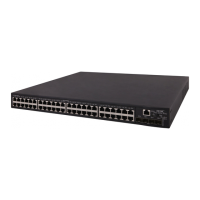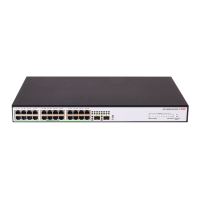1-11
Description
Use the dot1x mandatory-domain command to specify the mandatory authentication domain for
users accessing the port.
Use the undo dot1x mandatory-domain command to remove the mandatory authentication domain.
By default, no mandatory authentication domain is specified.
Note that:
z When authenticating an 802.1X user trying to access the port, the system selects an authentication
domain in the following order: the mandatory domain, the ISP domain specified in the username,
and the default ISP domain.
z The specified mandatory authentication domain must exist.
Examples
# Configure the mandatory authentication domain my-domain for 802.1X users on Ethernet 1/0/1.
<Sysname> system-view
[Sysname] interface ethernet 1/0/1
[Sysname-Ethernet1/0/1] dot1x mandatory-domain my-domain
dot1x max-user
Syntax
dot1x max-user user-number [ interface interface-list ]
undo dot1x max-user [ interface interface-list ]
View
System view, Ethernet port view
Parameter
user-number: Maximum number of users a port can accommodate, in the range 1 to 256.
interface-list: Ethernet port list, in the form of interface-list= { interface-type interface-number [ to
interface-type interface-number ] } &<1-10>, in which interface-type specifies the type of an Ethernet
port and interface-number is the number of the port. The string “&<1-10>” means that up to 10 port lists
can be provided.
Description
Use the dot1x max-user command to set the maximum number of users an Ethernet port can
accommodate.
Use the undo dot1x max-user command to revert to the default maximum user number.
By default, a port can accommodate up to 256 users.
In system view:
z If you do not provide the interface-list argument, these two commands apply to all the ports of the
switch.
z If you specify the interface-list argument, these two commands apply to the specified ports.
In Ethernet port view, the interface-list argument is not available and the commands apply to only the
current port.
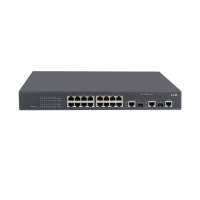
